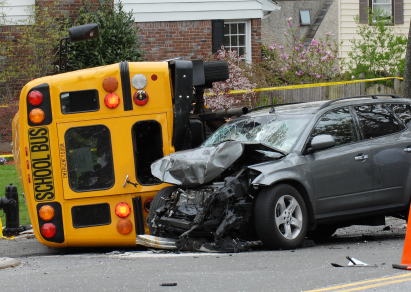Affordable Auto Insurance For The Cheap At Heart
How to get more affordable car insurance, liability considerations, and when to drop full coverage
Affordable auto insurance is a balancing act. Sure, you want to pay as little in premium as possible. However, you also want to make sure you’re covered correctly.
People who are in an accident with inadequate insurance often find themselves in a position which is not that much better than having no insurance.
If you stay with the same company, there are effectively two ways to tweak your policy to get the most affordable auto insurance. For one, lower your liability limits. Second, adjust “full-coverage” or material coverage by raising deductibles or by eliminating material damage coverage entirely.
Other components of auto insurance, such as uninsured and underinsured motorist coverage and medical payments in states that do not have “no-fault” insurance, generally represent a small portion of the total premium. That’s why they usually provide little cost savings if changed.
Liability Changes for Savings
The most basic component present in all auto insurance policies is the liability portion. This is required in most US states. Liability is further divided into three parts, liability for injury/death to one person, liability to injury or death to more than one person, and liability for property damage. Liability coverage is defined by the maximum amount an insurance company will pay in any given claim for each category.
In insurance parlance, liability coverage levels are often defined by a grouping of three numbers: 50/100/50 – that stands for $50,000 for injury or death to one person, $100,000 for injury of death to more than one person, and $50,000 for property damage. In some states, companies also offer a combined single limit liability policy, or CSL. This is liability that covers all three liability scenarios under a single limit, and can therefore be more flexible.
While it’s tempting to get just enough liability insurance to meet the state minimum, that’s generally not a good idea. State mandated liability insurance requirements are often outdated and therefore inadequate for anything except minor accidents.
For example, Idaho requires minimum liability coverage of 25/50/15, a fairly typical amount across the country. Some states require more, others require less.
That’s all fine and good until you’re found at fault totaling a $45,000 Mercedes. That $15,000 property damage limit isn’t going to cut it, and you face the possibility of being sued for the difference. Accordingly many insurance agents recommend liability limits no lower than 50/100/50, or $100,000 CSL if available.
Full-Coverage Changes To Save
The other main component of auto insurance is known as material damage or “full coverage.” This pays for repairs to your own car if you’re found at fault, or if you’re involved in a single car accident. If you’re making car payments, your bank or lienholder will require you to keep this coverage.
Here’s an industry secret: most lienholders don’t care what deductibles you carry, and there’s where your wiggle room is.
Material damage coverage consists of two deductibles, a collision deductible which applies to accidents, and a comprehensive deductible which covers non-accident related mishaps such as theft, vandalism damage caused by hitting animals.
These deductibles are generally available in amounts from zero to $1,000. The comprehensive deductible is usually (but not necessarily) lower than the collision deductible. When determining your deductibles to get the most affordable auto insurance, go with the highest number you’re comfortable with.
Once the car is paid off, no state requires material damage coverage. That means that you can legally drop full coverage. While this single act can make give you more affordable auto insurance, it shouldn’t be taken lightly. Ask yourself this question, “If this car is stolen or seriously damaged in an accident, will I be OK walking away from it?” If your honest answer is yes, then drop material damage.





